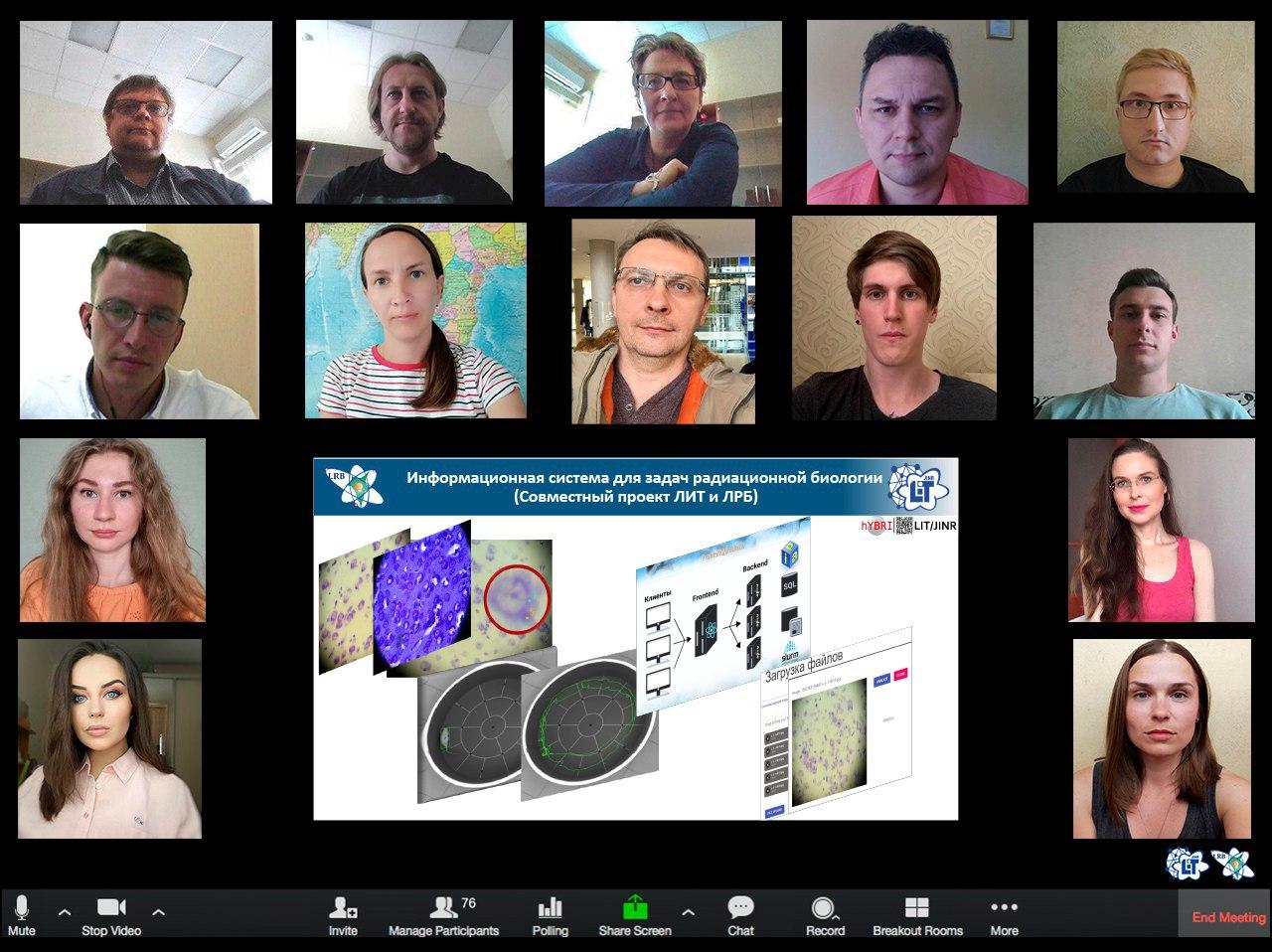Joining efforts of two laboratories
News, 30 June 2020
A joint workshop of the Laboratory of Radiation Biology and the Laboratory of Information Technologies was held on 18 June 2020. It was dedicated to a joint project “Information system (IS) for analyzing behavioural and pathomorphological changes in the central nervous system in the study of the effects of ionizing radiation and other factors on biological objects”.
The idea of the joint project rests on the problems facing the radiation physiology sector of LRB JINR, for the effective solution of which modern IT technologies were required. The IS is being created on the basis of the HybriLIT heterogeneous computing platform (JINR LIT), which has both the means to develop such systems and powerful computing resources of the “Govorun” supercomputer.
More than 70 specialists from LIT and LRB, as well as from research institutions of Germany, Switzerland and other countries, participated in the workshop, which was held in the online format.
The workshop comprised of six reports, which could be divided into three groups: 1) radiobiological studies and methods for processing the obtained experimental data (I. Kolesnikova, Yu. Severiukhin); 2) architecture of the information system under development (Yu. Butenko, D. Marov); 3) development of algorithms based on computer vision and deep learning technologies (A. Stadnik, A. Bulatov).
The radiobiologists’ reports could be equated to a virtual tour: the general design of the experiments, stages in the research, methods used for data analysis, examples of the intermediate and final results were described. The reports on the elaboration of the IS covered the developed client-server architecture of the application and the designed database, the prototype of the user web interface, the major components and tools for data visualization and analysis, as well as for interaction with the data storage system for different research groups. The possibility of automating the process of isolation, segmentation and classification of brain cells in images of histological preparations was described in the algorithmic part. The use of different architectures of deep neural networks was proposed as the main tool, and a data set consisting of images previously labelled by LRB experts with selected classes of brain cells according to the type of their disorder was created to train the networks.
The IS being developed will be able to take into account all the nuances of the work of the LRB radiation physiology sector and create a convenient information environment, which will simplify and automate the comprehensive analysis of all the data obtained, reduce the risk of information loss, ensure long-term storage of experimental data and easy access to them.
The reports aroused great interest among the audience; numerous questions were asked, and proposals to expand the information system in order to solve other problems in the field of radiation biology were made.
At the end of the workshop, LIT Director V. Korenkov and LRB Director A. Bugay expressed their support for the joint project and the prospects for its expansion to other experiments underway at LRB.
From the whole team, we express our gratitude to the Directorates of the Laboratories for support of the project and the opportunity for cooperation.
The materials of the workshop are available on the website.
Oksana Streltsova (LIT), Inna Kolesnikova (LRB)
